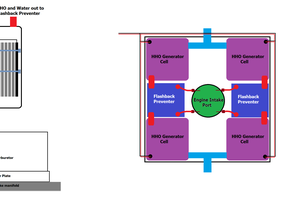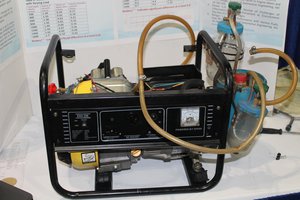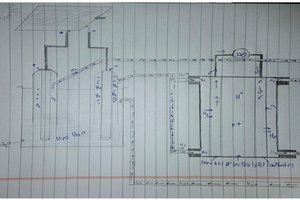PROBLEMS
- About 2 million litres of waste oil is discharged into the environment monthly in Nigeria. This waste oil is not biodegradable and has continually damage the ecosystems.
- High cost of alternative power generation which has resulted in high cost of local goods, thereby hindering their competitive ability in the market.
- Many Nigerians have luost their jobs due to below capacity production of the industries which is as a result of poor power supply or the very high cost of alternative power generation.
- Many lives have been lost due to carbon monoxide poisoning from conventional fuel based generators.
PROJECTS OBJECTIVES
- To reduce the problems generated due to irregular power supply in our society through generation of power from water and waste oil.
- To produce a generator that can produce cheap and sustainable electric power without releasing any large amount of obnoxious substances to the environment associated with conventional carbon based fuels.
HYPOTHESES
- Waste oil can be cracked into gases to be used to fire generator.
- It is possible to electrolyze ionized water (96% water, 2% NaNO3 and 2% Na2SO4) to produce hydrogen-oxygen mixture to fire generators.
- Hydrogen-oxygen mixture can be used as an alternative fuel to replace conventional carbon based fuels. METHODOLOGY
The project is divided into four stages:
- Adjustments to the generator engine through the retardation of the spark timing by 110
- Construction of the Catalytic andProcessing Chambers
- The Ionized Water chamber: Pipe A and B contains ionized water (containing 96% water, 2% Na2SO4 and 2%NaNO3). Two stainless mesh each measuring 18cm X 30mm were folded in a concentric form to form the anode and cathode.
- Testing the Efficiency of the Generator
PROCEDURE
- Removal of the tank of the 1.9KVA generator. This allows access to the carburetor and the spark plug.
- Construction of a pressure release valve mechanism that is joined to the carburetor.
- Retardation of TDI (Top Dead Injection) in order to set the new spark timing. Determination of Top Dead Centre
Diameter of the flywheel is 140mm
Therefore the circumference of the flywheel (2πr) = 440 mm
To achieve this delay in spark timing, the TDI moved 9.77 mm in the direction which the flywheel rotates.
- An upper layer consisting of two ceramic layers, each measuring 5mm sandwiching 5mm of grounded banana peels. A stainless steel cylinder of diameter 80mm and height 30mm was encased in glass fibre and resin as insulator. Underneath the filter is vanadium spunch which acts as a catalyst.
- The exhaust pipe of the generator directed into the catalytic chamber to supply the heat needed for the cracking.
The workability and the efficiency of the generator was tested over a repeated 6 hours period, varying the load and the results are stated in Table 1
RESULTS
When the generator starts working, it starts charging the ionized water electrolytic cell which in turns now produces the hydrogen-oxygen gas fuel for its continuous running.
Similarly ethane/propane gases are produced through the thermal catalytic gases which power the generator. Only one of the gas production systems can be used at once.
Anode
OH- → OH + e-
OH + OH →H2O + O
O + O → O2
1 mole of oxygen is released at the anode.
Cathode
H+ + e- → H
H + H → H2
2 moles of hydrogen was produced at the anode.
Summary of Reactions
Cathodic half cell reaction
4H+ +4e- →2H2
Anode half cell reaction
4OH- → 2H2O + O2+ 4e-
Over all reaction
4H+ + 4OH- → 2H2+ 2H2O + O2
Merits over higher carbon content fuel
The engine has higher pulling power and runs smoother. Inside petrol/diesel engine, carbon deposits builds up, thereby reducing the engine efficiency. The only emission when only ionized water is used is water, hence no carbon content to affect the engine (Ganrot,2005), when waste oil was used, the carbon(ii) oxide emitted was significantly lower, hence engine performance is higher.
All the results were subjected to Analysis of Variance Test at α level of 0.05. (95% confidence...
Read more » Cedar Centre STEM Hub
Cedar Centre STEM Hub

 TheThriftstoreHacker
TheThriftstoreHacker

 mahmoudbasyony1
mahmoudbasyony1
 Md. Moniruzzaman
Md. Moniruzzaman
Great job from young minds. Well done.